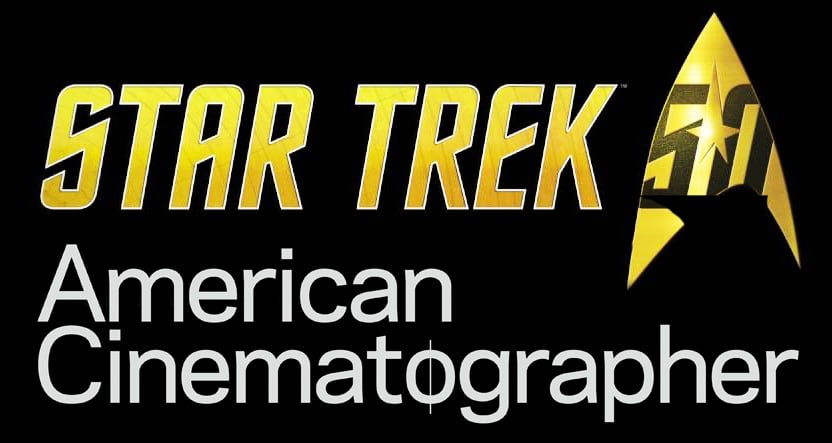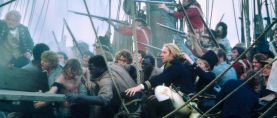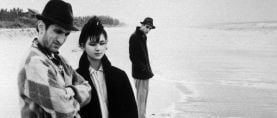
Boldly Captured: Star Trek Into Darkness
Cinematographer Dan Mindel, ASC, BSC and director J.J. Abrams combine anamorphic 35mm with 8-perf and 15-perf 65mm.

Photos by Zade Rosenthal, SMPSP, courtesy of Paramount Pictures
For Star Trek Into Darkness, director J.J. Abrams and cinematographer Dan Mindel, ASC, BSC initially planned to shoot digitally in 3-D, but, in the end, their shared affection for the anamorphic format and their desire to maintain visual consistency with 2009’s Star Trek (AC June ’09) led them to choose film instead. Mindel likens their decision to a confrontation between the Enterprise crew and an intergalactic threat, recalling that it sparked “an epic battle.”
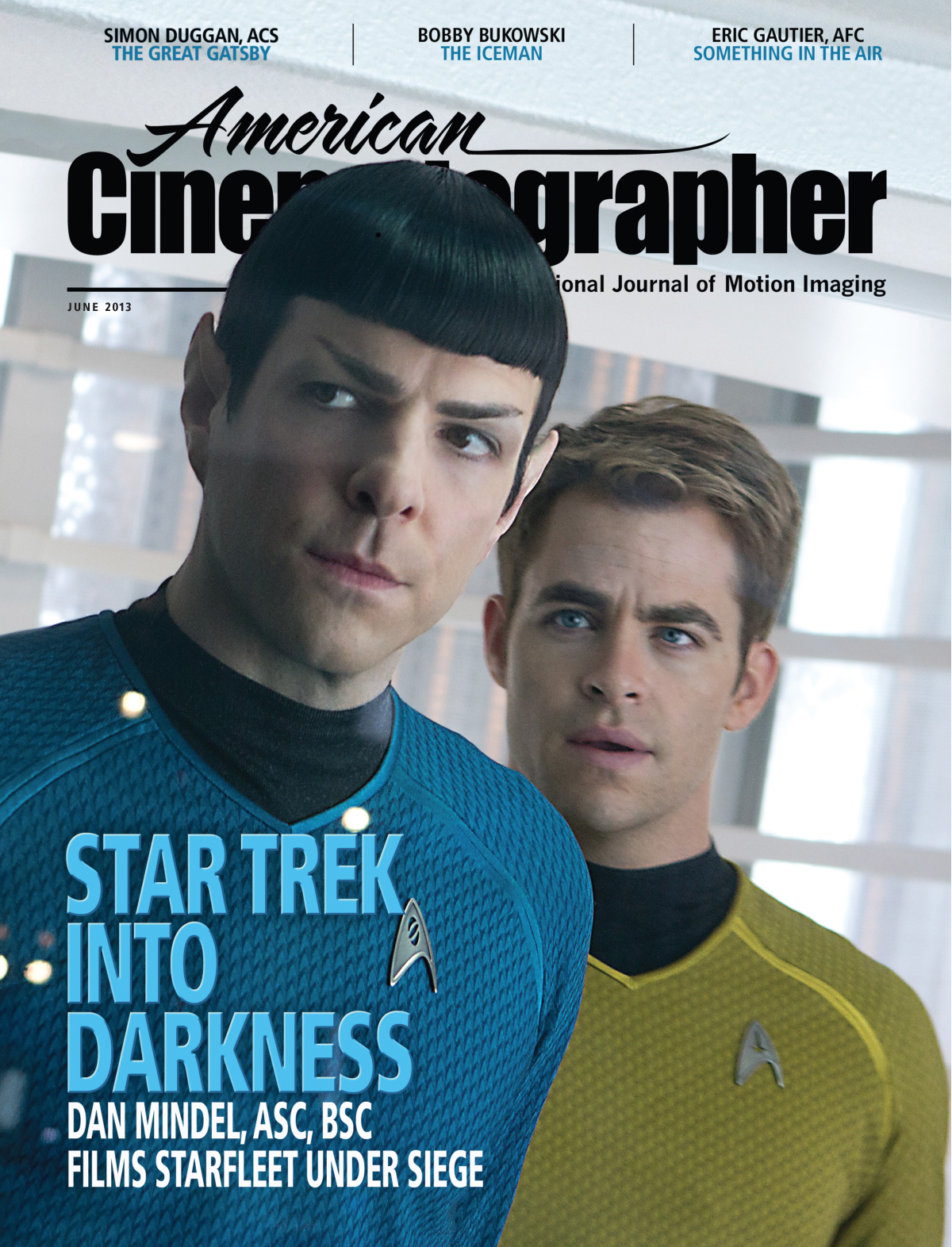
“I was never too keen to shoot in 3-D,” says Abrams, “but the studio [Paramount] wanted to do it that way.” However, some stereoscopic-conversion tests conducted on clips from 2009’s Trek convinced him that it was possible to shoot in 2-D and create high-quality 3-D in post, and Mindel lobbied hard to emphasize the anamorphic visual style and the lens flares that distinguished the look of the first movie. The cinematographer recalls, “All along, I was suggesting to J.J. that we shoot 3-D only at certain points in the film, and then create the rest of the 3-D in post. That would allow us to use all the anamorphic lenses we love and be less constrained during production. A conversation sprang from that, and when we were able to look at all the options and tests, we decided not to shoot in native stereo.”
Abrams also became interested in adding large-format material to the mix. “Once J.J. decided he might want to do that, I contacted Wally Pfister [ASC] to discuss his experiences shooting Imax [on The Dark Knight and The Dark Knight Rises] for Christopher Nolan,” says Mindel. “Then, Pfister and Nolan started lobbying J.J. to shoot film, which gave me some allies. In the end, J.J. agreed we should use anamorphic combined with Imax. So, we set off down a road that involved 15-perf and 8-perf 65mm and anamorphic 35mm, and that allowed us to create a gorgeous movie.” (Some inserts and aerial plates were captured with Red Digital Cinema cameras.)
The basic breakdown involved shooting 35mm for all interior scenes and 65mm for exteriors. Abrams mandated long sequences in each format because he didn’t want the transitions to be distracting. “As the information changes, the mind goes with it if [the approach] is consistent,” he observes. “I think most people won’t be aware of the format changes.”
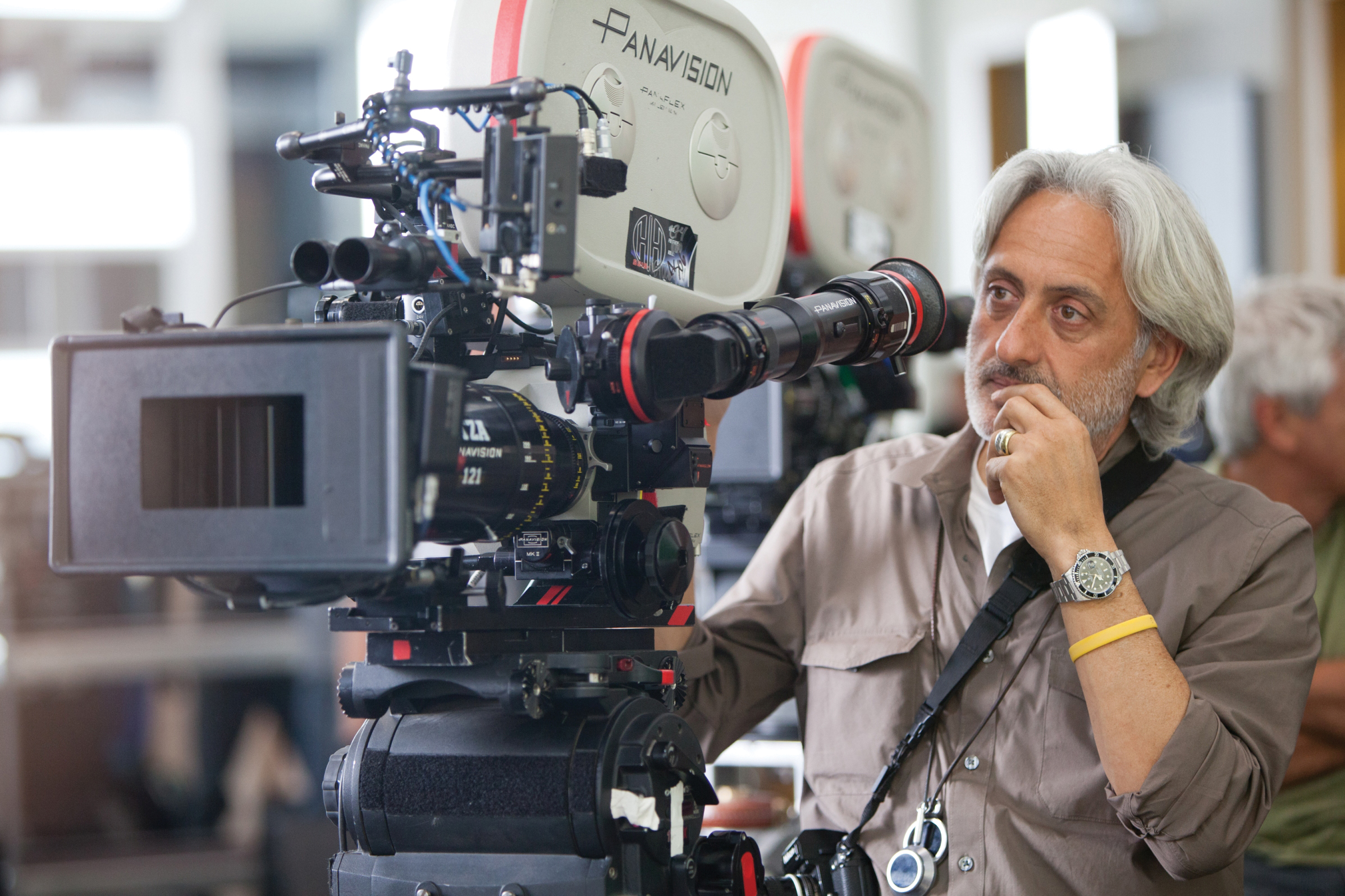
According to A-camera 1st AC Serge Nofield, one of the challenges of moving between the two formats was working in the different aspect ratios. “In an effort to bridge that difference, we didn’t use the entire [1.43:1] Imax negative — we masked it to achieve a ratio of 1.66:1,” he says. “When viewed in an Imax theater, the movie will shift from 2.40:1 to 1.66:1.”
When Mindel spoke to AC, he was shooting another blockbuster sequel on film, the latest Spider-Man, but he recognizes that film acquisition may not be an option on such productions for much longer. Still, he is convinced that anamorphic film images suit the Star Trek franchise best. “The shape of the Enterprise is perfectly captured in the anamorphic frame, and so is the geography of the ship’s bridge,” he states. “For this film, we did a bit of a makeover on the ship [by making it bigger], but we’ve kept the essential symmetry and feeling of it.”
Abrams is equally pleased that he was able to shoot Into Darkness on film and convert to 3-D. “I think film has the greatest look and the greatest resolution,” he says. “The studio wanted a 3-D movie, and [shooting film] became an easier decision once we realized we could deliver that with a quality conversion. We were lucky to work with stereographer Corey Turner, who did incredible work that adds to the thrill-ride aspect of the movie."
"My goal was to make as good a film as I could in 2-D and let it be converted to 3-D for those who wanted the ‘hot sauce.’ I think we achieved that.”
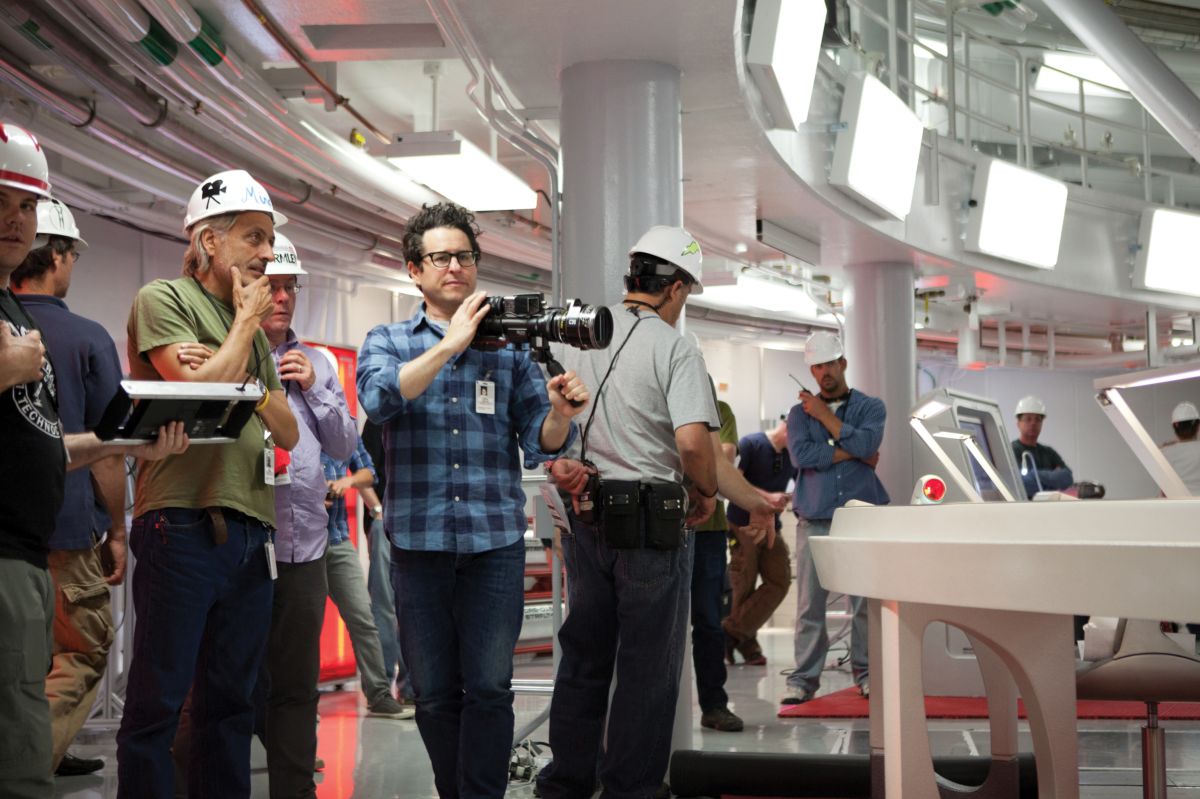
Mindel used a wide range of Panavision C-Series, E-Series and Primo anamorphic primes, as well as Primo zooms (3:1 ALZ3 270-840mm T4.5, 11:1 ALZ11 48-550mm T4.5, AWZ2 40-80mm T2.8 and ATZ 70- 200mm T3.5), with three Panaflex Millennium XL2s and an Arri 435ES.
For the 65mm material, the filmmakers used four Imax MSM 9802 cameras, two Iwerks 8/70 cameras and one Iwerks Lightweight 8/70. Lenses included Imax and Iwerks prime lenses, some 2x80 Hasselblads loaned to the production by Christopher Nolan, and others made for the show by Panavision optical engineer Dan Sasaki.
Abrams describes shooting Imax as “cumbersome, laborious and tedious. The cameras are not new machines, and they don’t always work perfectly. They are as loud as can be and difficult to move with any speed. But despite all that, it could not have been more worth it. Imax delivered an unbelievable image.”
Nofield notes, “These large format cameras are meant to be out there in nature, shooting maybe one mag a day, but we were reloading constantly. The design and movement make the camera difficult to thread, and it can take three to four times longer to reload it [compared to a 35mm camera].”
Visual-effects supervisor/2nd-unit director Roger Guyett adds, “The reality of shooting Imax is dealing with the mechanics of the equipment, the size of the camera and the extended load times. [You have to consider] the choices and the feel of the images, and you also have to anticipate how they will be projected. It was a learning experience for most of us to try to understand the correct framing.”
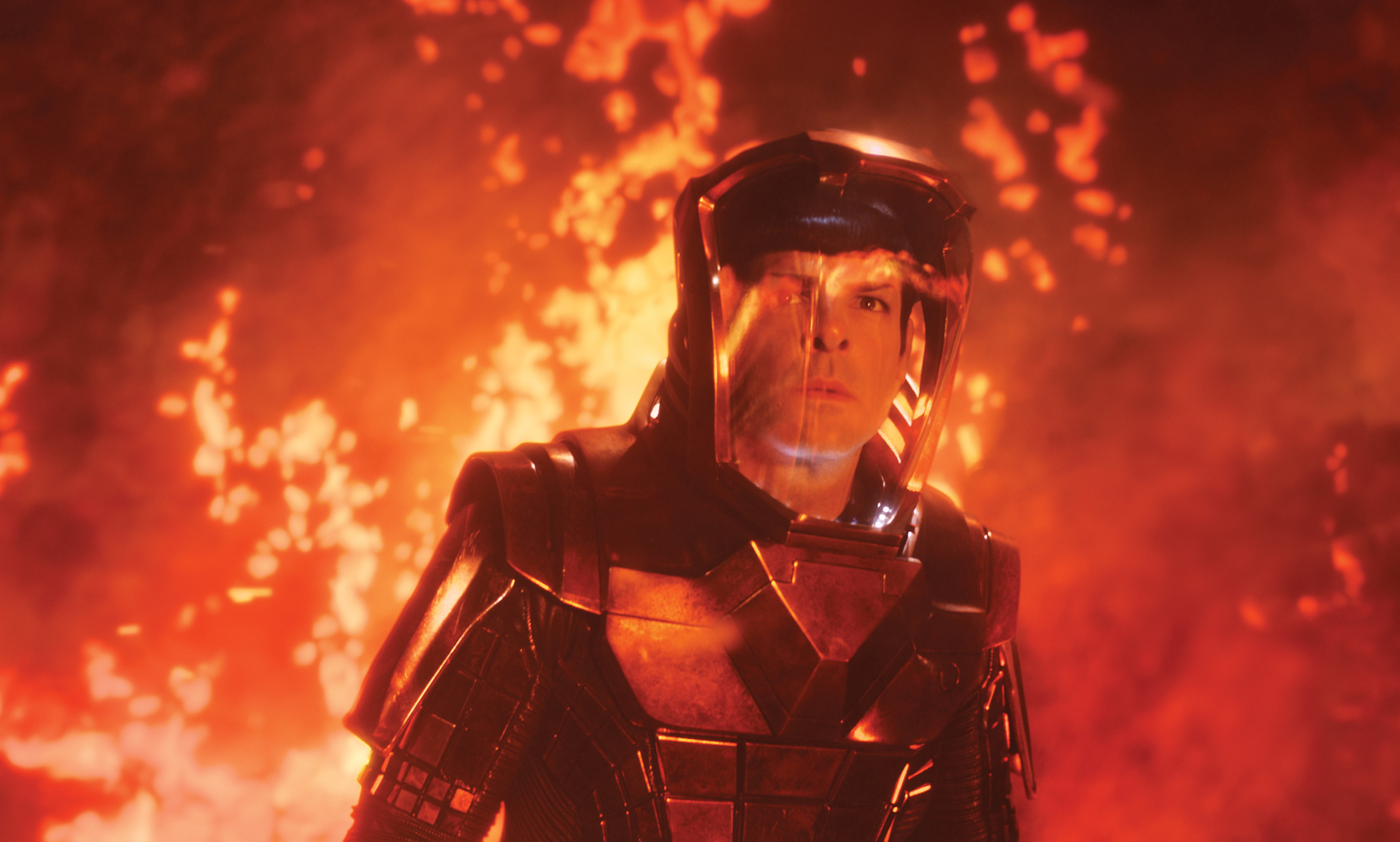
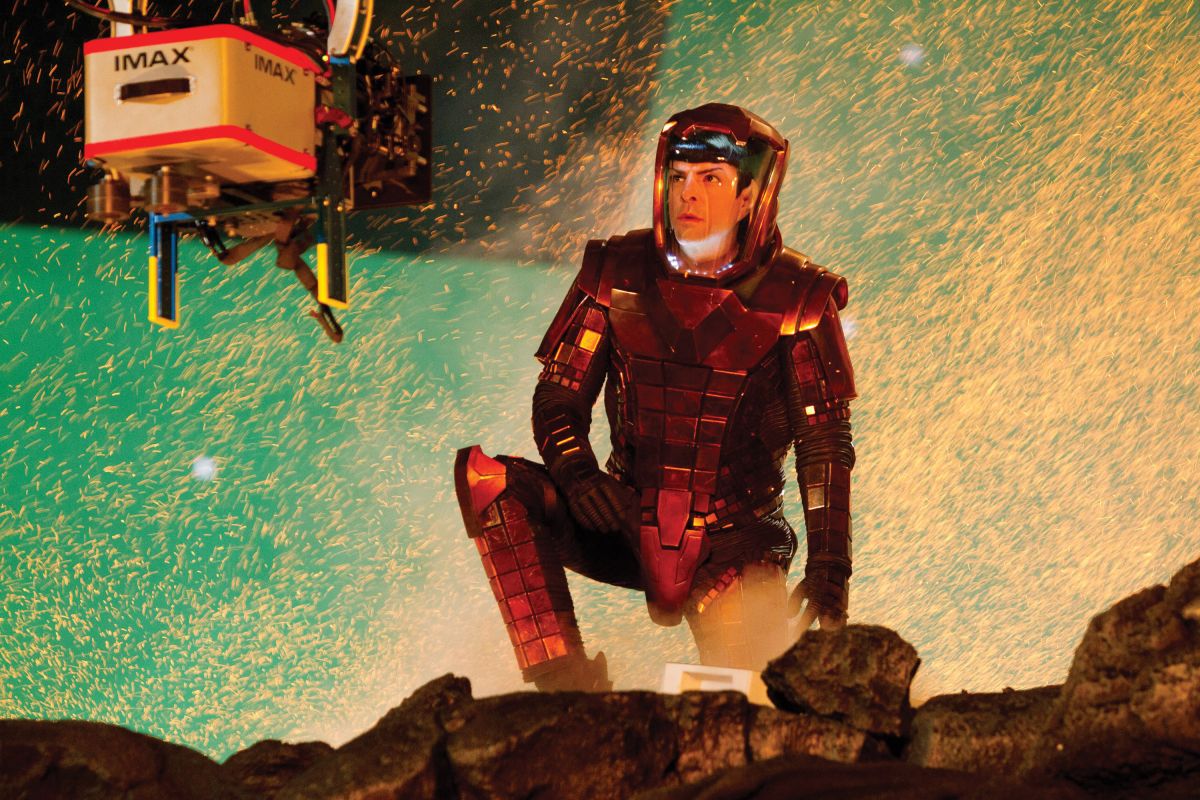
A-camera operator Colin Anderson agrees that shooting in Imax required a mindset adjustment. He explains, “When you look at the Imax frame in an Imax theater, you look straight at it. Because of the screen’s height, the top part of the screen is not comfortable to look at. So, in framing a close-up for Imax, you put the subject right in the center of the screen. Even when framing a landscape scene, we would frame toward the center of the screen rather than the bottom. That was something we all had to get used to.
“The biggest challenge for us operators was avoiding each other in our shots,” he continues. “For a volcano sequence early in the film, we had dueling Technocranes swinging around amid flames and sparks, and keeping each camera out of the other’s shot was not easy. [B-camera operator] Phil Carr-Forster and I worked hard to synchronize our moves for those kinds of scenes.”
Imax is also “tough on focus pullers,” says Nofield. “The best way to move Imax cameras is on a crane, so we brought those in whenever possible, but on a crane you are limited with your marks. And with Imax, you need telephoto lenses to achieve a normal field of view, so we were always shooting tight. You really have to rely on crane operators to hit marks as well as they can.”
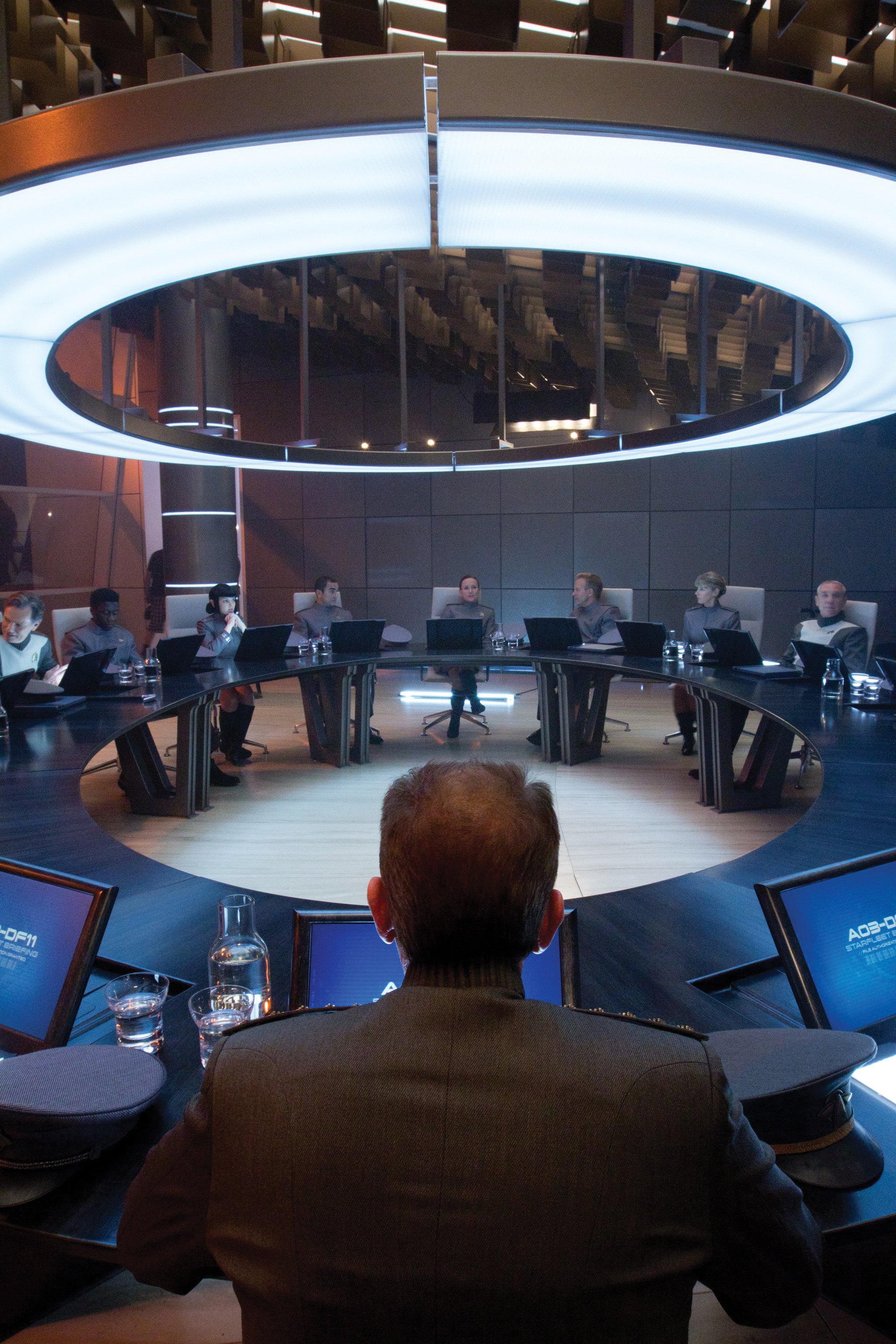
In addition to crane moves, “there is a lot of Steadicam in the movie,” says Anderson. “We did two Steadicam shots with the Lightweight 8/70 Iwerks camera, and we had to have a special plate made just to balance it on the rig. Of course, there’s a compromise involved because of the weight — the rig won’t fly exactly as it’s designed to. You get tremendous inertia from the added weight, which makes quick pans and tilts impossible. But there were two shots we felt we had to do with the Steadicam. One is inside a shuttlecraft that has landed on a planet. We push down the length of the shuttle and then pan out the door and onto the landscape. It was tricky because of the limited physical headroom [inside the shuttle]; I had to do the shot hunched over! Also, because of the weight of the camera, the Steadicam arm was absolutely maxed out. You almost have to lift the camera so the arm doesn’t bottom out, which further compromises the move.”
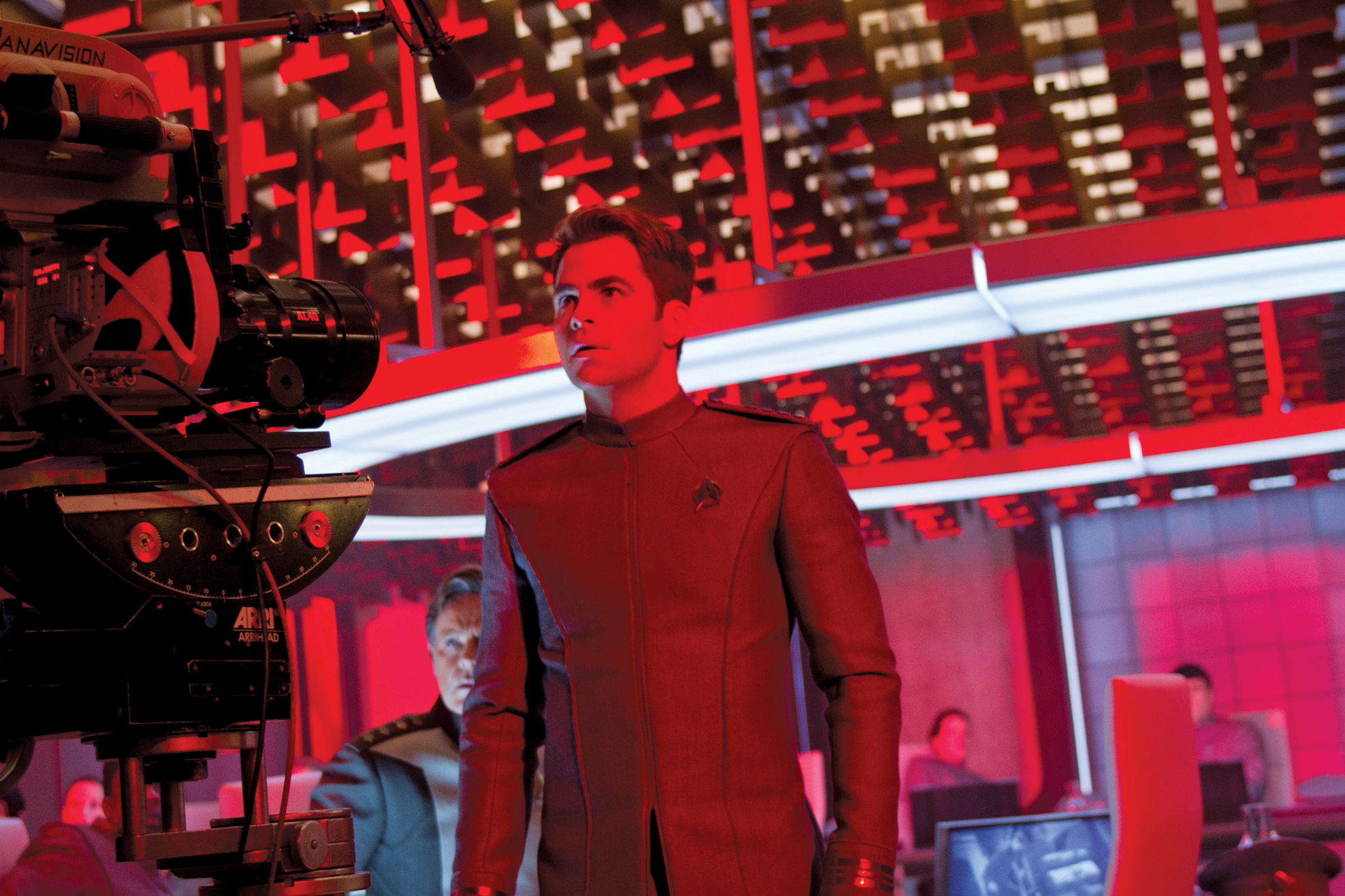
The extensive use of anamorphic lens flares is a hallmark of the look Abrams and Mindel have designed for Star Trek, and most of these flares were accomplished practically, often by crew waving Xenon flashlight beams at the lens at key moments. Abrams concedes that his use of such flares has become “a bit of a joke, so we did try hard not to overdo it. But it was part of the first movie’s aesthetic, so we needed to maintain a certain consistency. I can’t help but love what happens when light hits those beautiful anamorphic C- and E-Series lenses.”
“We like the idea of antagonizing the lens!” says Mindel. “Whether it’s a piece of glass in the foreground or some sort of in-camera aberration, we will do it if it fits. It allows us to bring just a bit more life to what could otherwise be a conventional-looking picture. I think flares and other dings in the image add effervescence to it. It feels very naturalistic.”
Gaffer Chris Prampin observes that Abrams and Mindel have become “experts at flares — it is second nature to both of them.” But, according to Anderson, the team had to be careful while crafting flares on set: “You can definitely go from a beautiful blue flare running across the frame to ‘milking,’ which is unattractive. Sometimes, in order to preserve a flare, we pulled the diffusion filter if we were carrying one. That would stop the milking and produce a harder flare. Dan asked to have small, hot, directional lights built into the set, and we would sometimes aim them down the lens. If we were doing a close-up and wanted a flare, Dan would stand just out of shot with a Xenon flashlight and pan it on and off, or move it slowly off to the side of the frame until we found the most pleasing flare. For Steadicam shots, he would often stand right in the frame, and as I panned through him, he’d fire [the flashlight] straight down the lens. The image gets whited out, so you don’t see him standing there.”
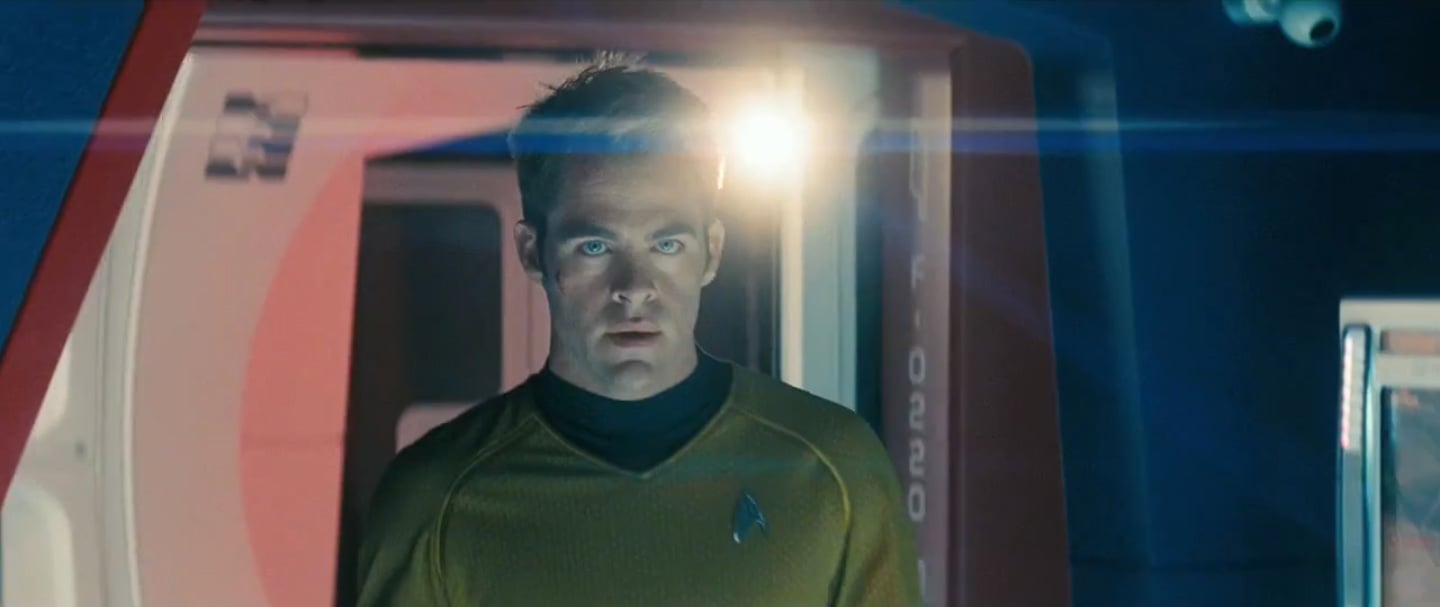
Abrams wanted the Enterprise’s look to be consistent with its appearance in the last movie, but bigger. Into Darkness reveals the bowels of the ship, as well as other nooks and crannies that were not previously shown onscreen. Meanwhile, the famous bridge maintains the filmmakers’ commitment to a clean, high-tech aesthetic that Mindel likens to an Apple Store. Most lighting for the bridge was built into that set as practicals, LEDs, fluorescents and Tungsten MR16 units that the crew called “eyeballs.” Mindel explains, “We built the lights into the set so the camera could go in any direction without running into movie lights. The idea was to be able to shoot everywhere without ripping walls or breaking the fourth wall. The bridge is so iconic that we needed to preserve its integrity.”
The LEDs were the workhorse units for the bridge. Prampin notes, “LEDs have advanced since we made the last movie. They’re easier to control, and we can do more with them than fluorescents when we’re creating effects like lights-out cues or flickering. They also gave us more consistent color because we didn’t have to mix them as much with fluorescents. LEDs don’t always work well with film because they can flicker, but Al DeMayo [of LiteGear] has made them more motion-picture friendly with a line of flicker-free dimmers and power supplies. That technology allowed us to control the LEDs better.”
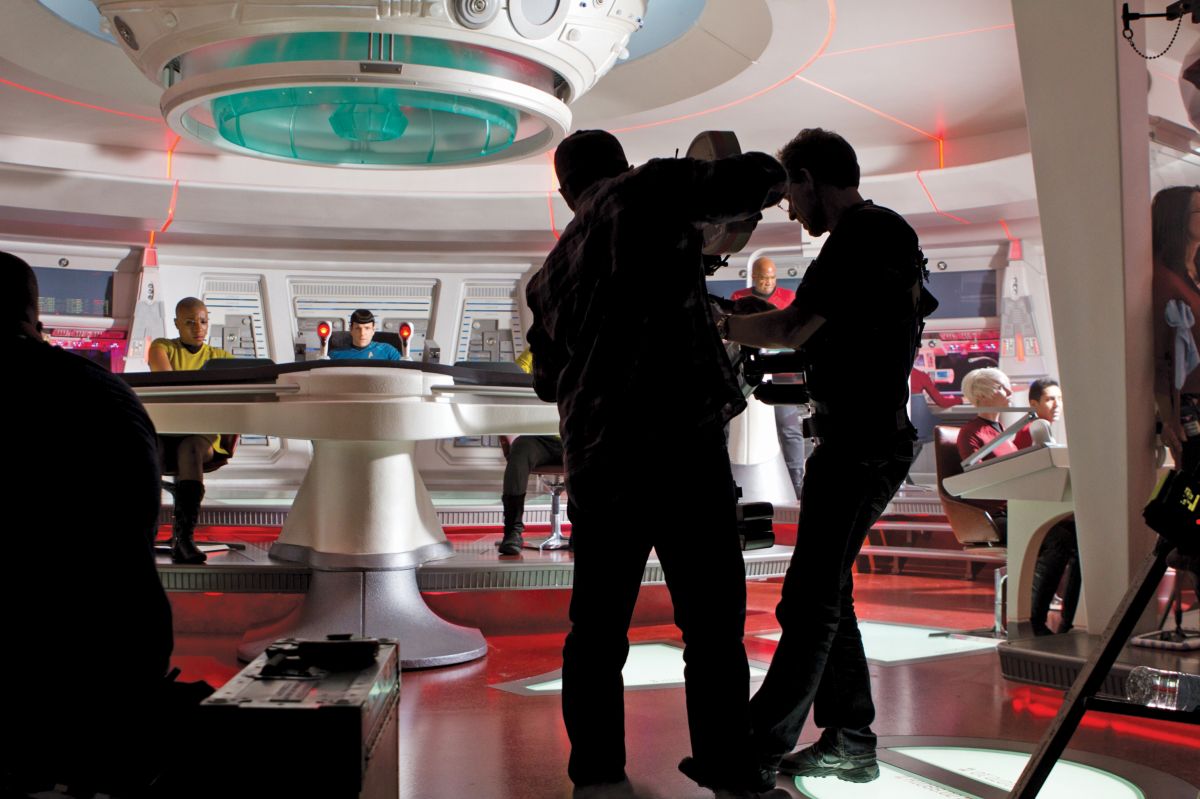
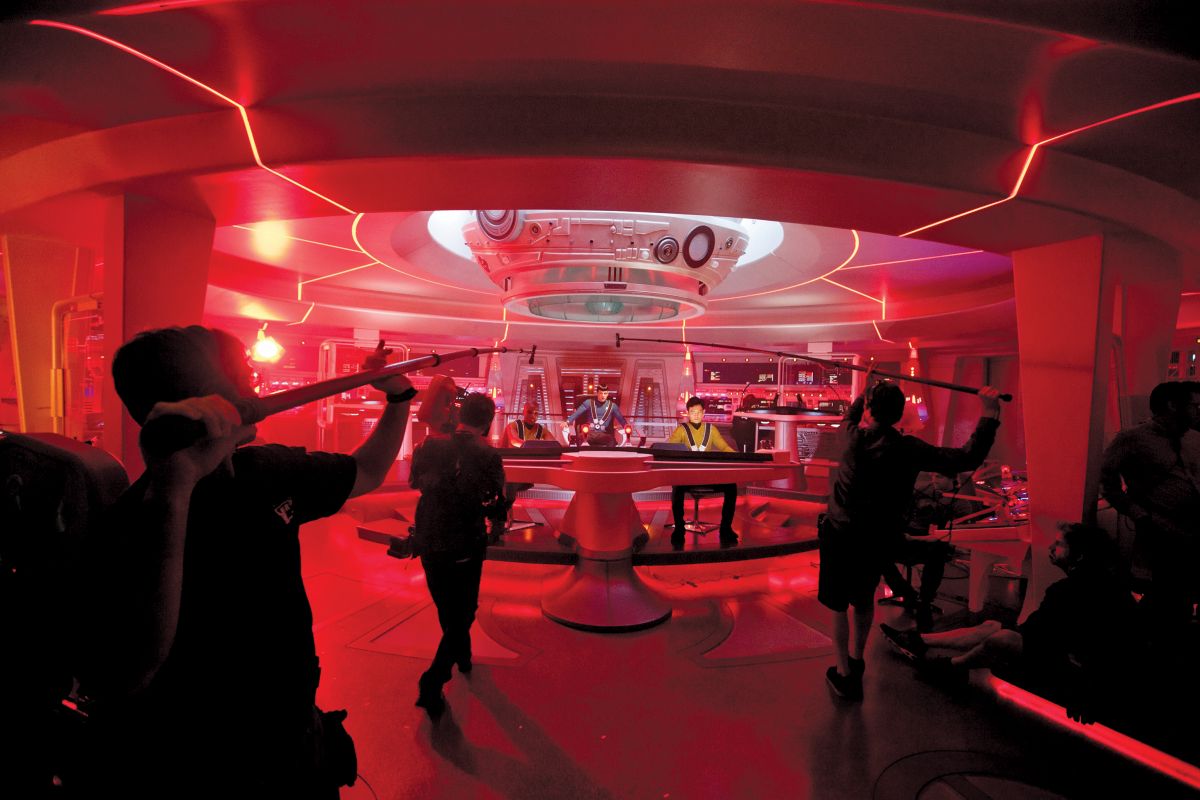
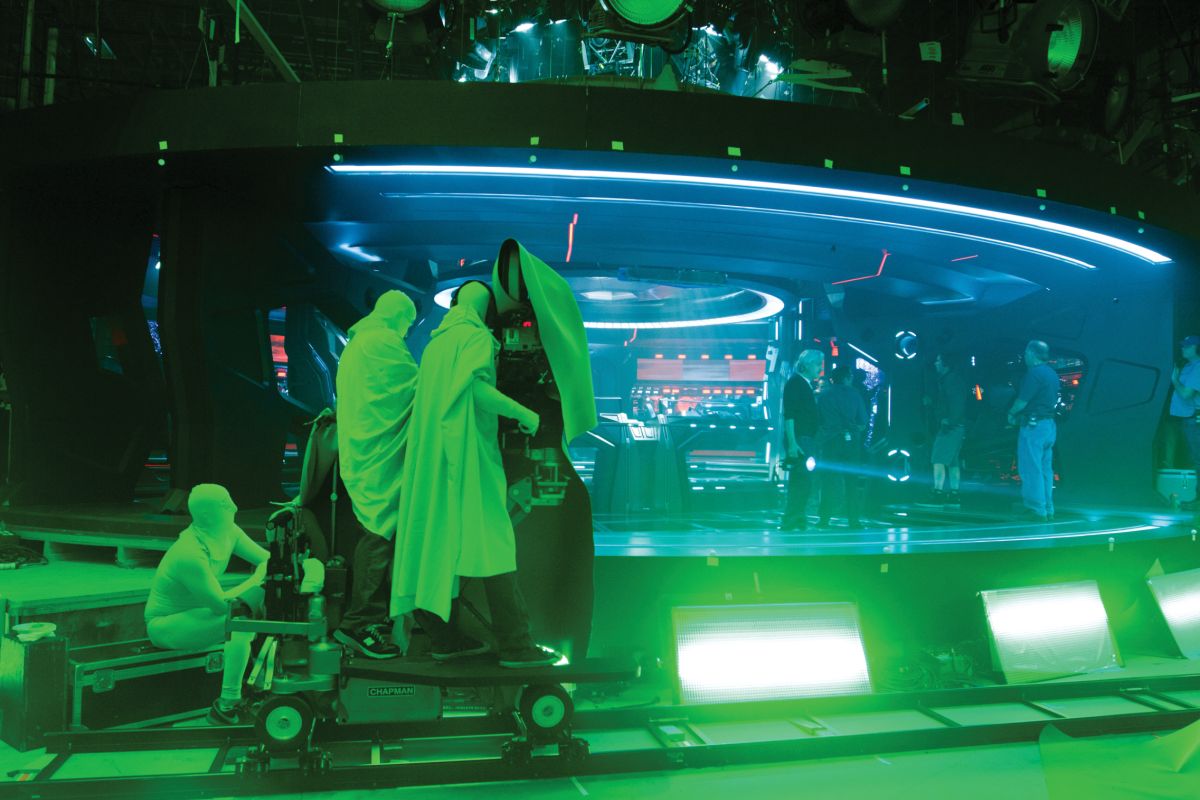
Events taking place off the Enterprise really challenged the filmmakers, particularly if the scenes involved Imax cameras. One such sequence follows Kirk (Chris Pine) and McCoy (Karl Urban) as they are chased through a red-hued alien forest to the edge of a cliff, where they decide to jump. Because Abrams wanted to capture authentic sunlight, the set was constructed outside at Playa Vista Studios, where the art department created extensive foliage for the alien jungle. Guyett recalls, “[Production designer] Scott Chambliss built the jungle, but that meant the set got smaller than we’d hoped, and the whole chase sequence had to be done over a distance of less than 100 feet. But J.J. understood how to use the camera to create space so that we could properly extend the jungle [digitally] in post. As part of the set, we built a ramp so the actors could jump 4 or 5 feet to get the enormous opening up moment in the move, where we stay on the same line as the actors. As they jump, the camera rises up and exposes the huge cliff and the water below.”
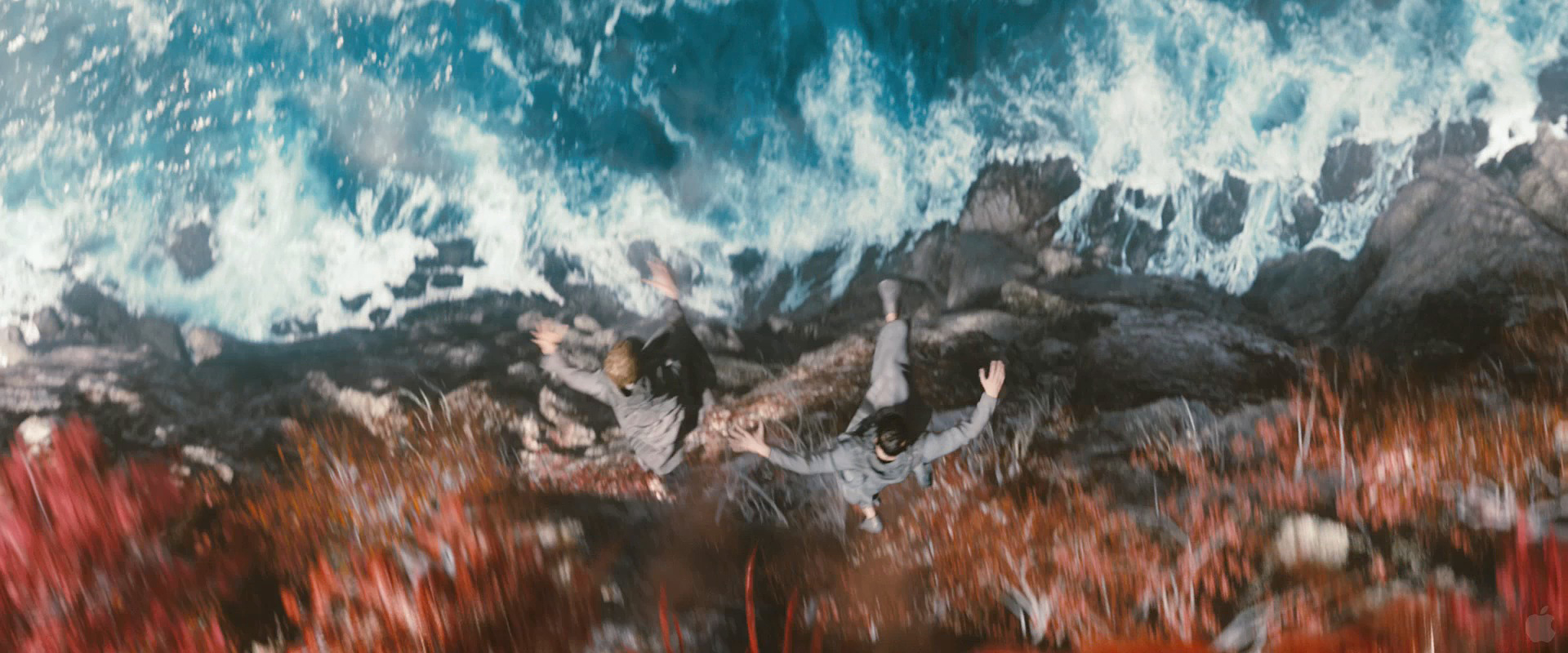
Executing the move, Anderson explains, involved “a two-axis shot running down the length of the set using a NavCam [stabilized wire-rig control system] strung between two cranes.” The shot was difficult to frame because the NavCam’s acceleration would periodically cause the Imax camera to swing back and forth. On the second day of shooting the sequence, however, the camera was re-rigged to shorten what key grip Charley Gilleran calls “the periscope,” a 3' riser that separated the camera from the cable. This eliminated the pendulum effect and made the entire rig more manageable.
The crew’s rigging expertise proved essential throughout the production. “This was a massive rigging show,” says Abrams. In addition to the cliff jump, three other aspects of the exterior work stand out in this regard.

On the set depicting the Klingon city of Kronos, a pulsating lighting rig that Mindel describes as “absolutely humongous” stood in as a spaceship landing beacon, the predominant light source in the sequence. Prampin explains, “We built half of it, and the other half was CGI. Dan, [rigging gaffer] John Manocchia and I decided we should build a wall of Pars, and we used 1,200 1K narrow-globe Par cans on dimmers operated by [lightingconsole programmer] Josh Thatcher, who used a Hog 3 console to control light and a Catalyst Media Server to send content across it. Josh created a nice pulse with various flickers filtered with Lee 101 Yellow. [That rig] was essentially a wall positioned off to the side, stretching almost floor-to-ceiling in a semicircle. Above it was a truss rig that held four 20K Molebeam projectors. The light came through a translucent set-piece that the art department built to act as a diffuser. It was the most complicated lighting setup on the show.”
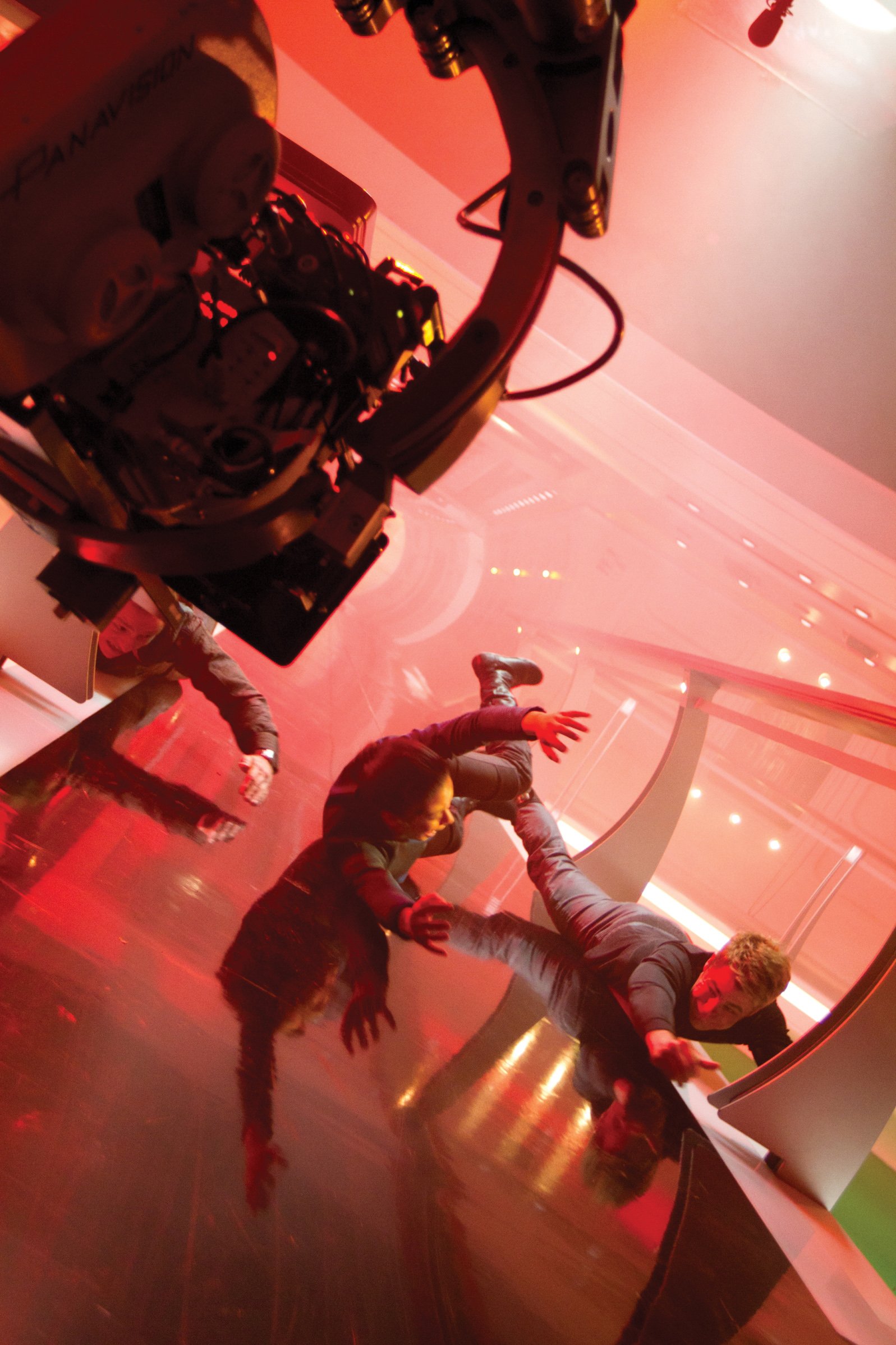
Strategic rigging also solved another logistical test on the Kronos set, where the night sky is marked by a variety of light effects that represent spaceship traffic. “We created floating rigs to represent the flying ships,” Prampin reveals. “We had nine truss boxes that floated from the ceiling, and inside those, we had Xenons, moving lights, Lightning Strikes units, and Par cans. Each had its own operator.”
Another rigging trick enhances a key scene in which an alien ship launches a surprise attack on a Federation conference room situated atop a skyscraper on Earth. Abrams wanted the ship to slowly rise up the side of the building, shine lights into the conference room and then launch its attack. To create the illusion, Guyett, Gilleran and rigging key grip Kevin Fahey developed what Gilleran describes as “a 15-foot equilateral triangle of flying lights.” The rig required two electricians to ride along to operate the lamps. “We were limited to 1,400 pounds for the whole thing to operate within the flight envelope we needed, so one struggle was just to find lightweight electricians!” Gilleran says. “The task of programming the whole thing and installing the winches fell to Jason Shupe, the NavCam programmer, who used an automated motion-control system called Navigator Software [from Fisher Technical Services]. That allowed us to fly a 1,400-pound unit around the stage like it was an alien ship.”
Guyett says the shot exemplifies how well Into Darkness combines live-action photography and visual effects. “First, we animated the spaceship moves in [Autodesk] Maya, and then we put that data into the NavCam system so the lights would inherently have the motion of the vehicle we had created,” he explains. “It was a very effective collaboration between the rigging department and visual effects.”

On Star Trek, Abrams chose the interior of a Budweiser brewery in Northridge, Calif., to stand in for parts of the Enterprise engine room, and the production turned to that location again for Into Darkness. Abrams also sought additional practical locations that could represent other sections of the starship. One such location, the Lawrence Livermore National Laboratory, was used to depict several different areas of the ship. “At a location like that, you’re presented with options you can’t get if you build an interior set,” notes the director. “There are more opportunities for camera placement, and where the light is and what it is doing can’t be predicted completely, [which] presents opportunities. Using the Livermore Labs gave some of the interiors we shot a granular reality, which helps to ground the movie.”
However, the facility came with certain restrictions. “We were limited on what lights we could bring inside because we were not allowed to change the air temperature in there,” Mindel says. This was such a concern that during prep, Mindel sent Manocchia to Livermore so the lab officials could test every instrument the filmmakers intended to use during the shoot. Prampin submits, “Ultimately, we could only use smaller, cooler lights: a lot of Kino Flos, LEDs and some small HMIs. The facility was quite large, and it was challenging to rig there without affecting its normal operations.”
FotoKem processed all of the production footage and created dailies for both formats. ASC associate member Mark Van Horne, FotoKem’s director of production services, interacted daily with Mindel and, when necessary, transported 35mm dailies to the filmmakers’ location. At press time, the filmmakers were beginning the final grade with colorist and ASC associate member Stefan Sonnenfeld at Company 3 in Santa Monica, and Mindel anticipated that the process would help with contrast-level adjustments. “The lenses we used are high-contrast, and 5219, our main negative, is low-contrast,” says the cinematographer. “By using high-contrast lighting, I can [increase] the contrast of the negative, and by using high-contrast Primo lenses, I can get even more contrast. Then, in the DI, we can balance that out and give the blacks and the other dense tones still more density and heaviness.”
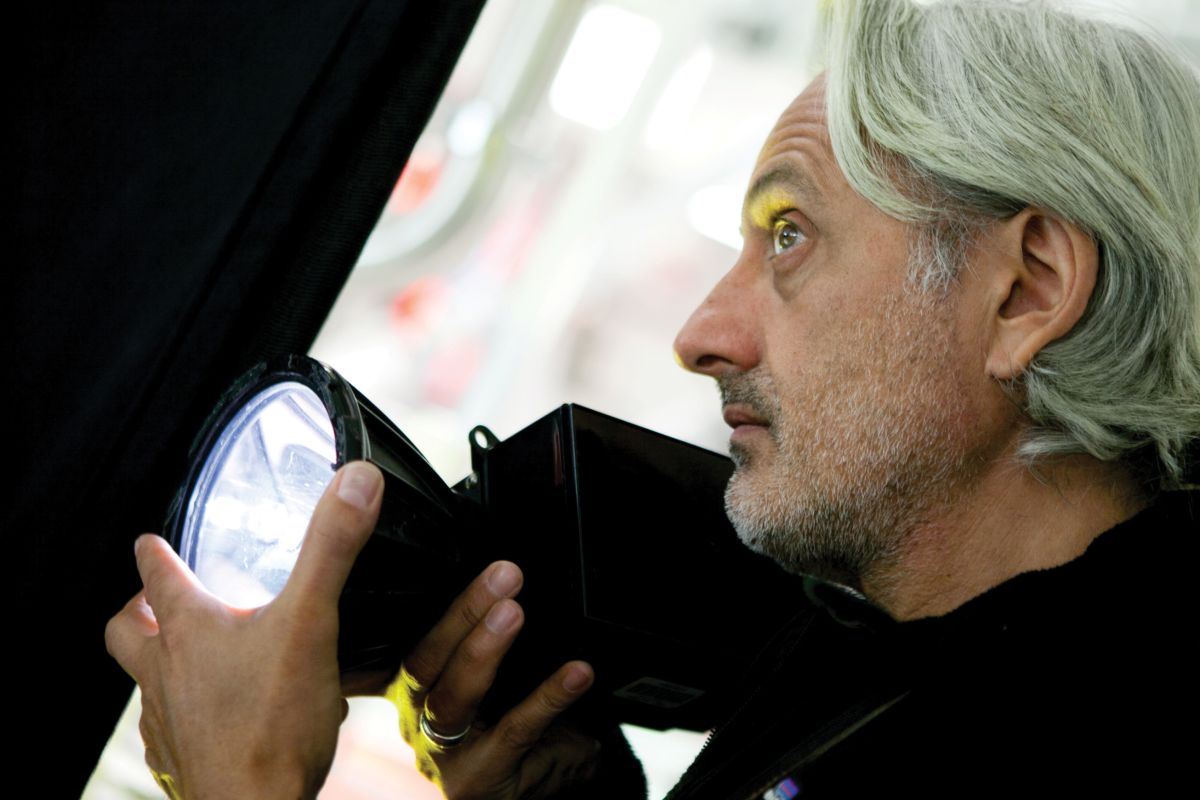
2.40:1 and 1.66:1
35mm Anamorphic 5-perf and 8-perf 65mm
Panaflex Millenium XL2; Arri 435ES; Imax MSM 9802; Iwerks 8/70, Lightweight 8/70
Panavision C-Series, E-Series, Priomo; Imax; Iwerks; Hasselblad
Kodak Vision3 500T 5219, 200T 5213
Digital Intermediate
Stereoscopic Conversion
You’ll find much more of AC’s past Trek coverage here — going all the way back to the original series.
